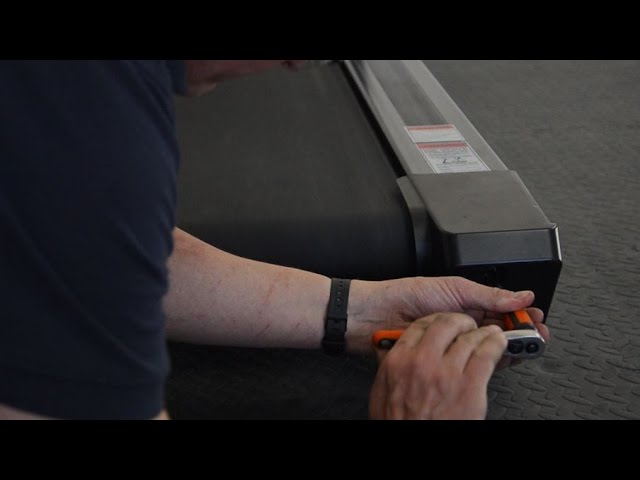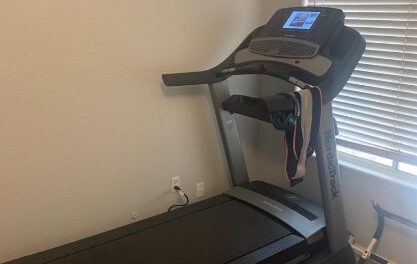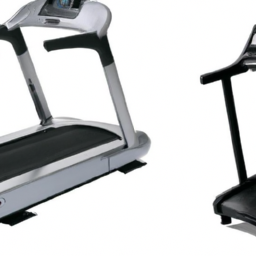If you’re struggling with a treadmill belt that’s slipping or not aligned properly, don’t worry! Adjusting a treadmill belt is easier than you might think. In this article, we’ll walk you through the steps to ensure your treadmill belt is in the perfect position, providing you with a smooth and safe workout experience. Whether you’re a seasoned treadmill user or just starting out, these tips will help you keep your treadmill running smoothly and efficiently. So let’s get started and learn how to adjust a treadmill belt!
How to Adjust a Treadmill Belt
Understanding the Importance of Belt Adjustment
Adjusting the treadmill belt is an essential maintenance task that should be done regularly to ensure optimal performance and avoid potential safety hazards. The treadmill belt, also known as the running belt, is the part of the treadmill that you walk, jog, or run on. Over time, the belt can become loose, misaligned, or worn out, affecting your workout experience and increasing the risk of injuries. Adjusting the treadmill belt allows for smoother operation, decreases friction, and prolongs the lifespan of your equipment.
Determining if Your Treadmill Belt Needs Adjustment
Before diving into the adjustment process, it’s important to determine if your treadmill belt actually needs adjustment. There are a few signs that indicate it’s time to tweak the tension or alignment. First, if the belt slips when you’re walking or running on it, it’s a clear indication that it needs adjustment. Additionally, if you notice excessive noise, reduced belt speed, or a jerky motion during your workout, these are signs that the treadmill belt may be misaligned or loose. Regularly inspecting the belt for wear and tear, including fraying or cracking, is also recommended.

This image is property of garagegympro.com.
Preparing for Adjustment
Once you’ve determined that your treadmill belt needs adjustment, it’s essential to gather the necessary tools and prepare your workspace. The tools required may vary depending on the specific model of your treadmill, but common ones include an Allen wrench, a screwdriver, and a tape measure. It’s also recommended to have a clean cloth or towel handy to wipe any dirt or debris off the belt and deck. Before starting the adjustment process, ensure that your treadmill is unplugged and the power switch is turned off for safety.
Adjusting the Treadmill Belt Tension
The first step in adjusting the treadmill belt is to address the tension. A loose belt can cause slipping, while an overly tight belt can strain the motor and cause excessive wear. Refer to your treadmill’s user manual for specific instructions, but in general, you’ll need to locate the tension bolts, usually positioned at the back end of the treadmill deck. Using the appropriate tool, such as an Allen wrench, gradually turn the bolts clockwise to tighten the belt or counterclockwise to loosen it. Make small adjustments, testing the tension after each one, until the belt feels secure but still allows for smooth movement.
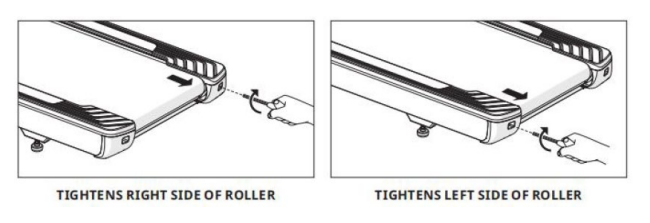
This image is property of support.horizonfitness.com.
Checking the Belt Alignment
In addition to tension, the alignment of the treadmill belt plays a crucial role in its performance. A misaligned belt can cause uneven wear, increased friction, and potential injury. To check the alignment, start by visually inspecting the belt while it’s in motion. It should run parallel to the treadmill deck without rubbing against the sides. Another method is to step onto the treadmill and observe if the belt veers to one side when you walk or run. If either of these signs is present, you’ll need to realign the belt to ensure proper tracking and even wear.
Aligning a Misaligned Treadmill Belt
To align a misaligned treadmill belt, locate the adjustment bolts on the side of the treadmill near the back roller. These bolts control the lateral alignment of the belt. Using the appropriate tool, typically a wrench or a screwdriver, adjust the bolts in small increments. Make clockwise adjustments to move the belt towards the left and counterclockwise adjustments for the right. After each adjustment, step on the treadmill and observe the belt’s movement. Continue making minor adjustments until the belt tracks straight and doesn’t rub against the sides.
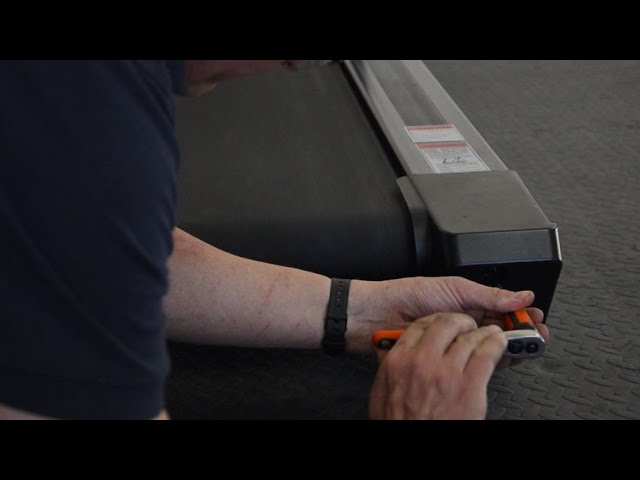
This image is property of i.ytimg.com.
Preventing Belt Slippage
To prevent belt slippage, there are a few measures you can take. First, ensure that you’re using the treadmill on a stable and level surface. Uneven surfaces can lead to an imbalanced belt and increased slippage. Regularly inspect the drive belt as well, as a worn or loose drive belt can cause the running belt to slip. If necessary, consult your treadmill’s user manual on how to tighten or replace the drive belt. Additionally, avoid excessive friction by keeping the belt clean and free from debris. Wipe down the belt and deck regularly, and if necessary, use a treadmill mat to reduce friction between the belt and the floor.
Lubricating the Treadmill Belt
Proper lubrication of the treadmill belt is another crucial aspect of belt maintenance. Over time, the belt can dry out and lose its smoothness, resulting in increased friction and potential damage to the motor and other components. Lubrication helps reduce friction, prolong the life of the belt, and ensure a smooth and quiet workout experience. Refer to your treadmill’s user manual for specific instructions on the type and frequency of lubrication required. Generally, silicone-based lubricants are recommended for most treadmills. Apply a small amount of lubricant to the underside of the belt, following the manufacturer’s recommendations, and run the treadmill at a slow speed for a few minutes to distribute the lubricant evenly.

This image is property of i.ytimg.com.
Maintaining Proper Treadmill Belt Tension
Adjusting the treadmill belt is not a one-time task. To ensure optimal performance and longevity, it’s essential to regularly check and maintain the proper belt tension. As you continue to use your treadmill, the belt may gradually loosen or stretch, requiring readjustment. Additionally, factors such as humidity and temperature can affect belt tension. Therefore, it’s recommended to inspect and adjust the tension every few months or as needed. Regularly monitoring the belt alignment and lubrication is also crucial for maintaining a well-functioning treadmill.
Final Thoughts on Treadmill Belt Adjustment
Adjusting a treadmill belt may seem like a daunting task, but with the right tools and knowledge, it can be easily accomplished. Regular maintenance and adjustment of the belt will not only enhance your workout experience but also extend the lifespan of your treadmill. Remember to always refer to your treadmill’s user manual for specific instructions related to your model. By properly adjusting the tension, aligning the belt, preventing slippage, lubricating, and maintaining regular inspections, you’ll keep your treadmill running smoothly and ensure a safe and effective workout every time.
This image is property of support.sunnyhealthfitness.com.

